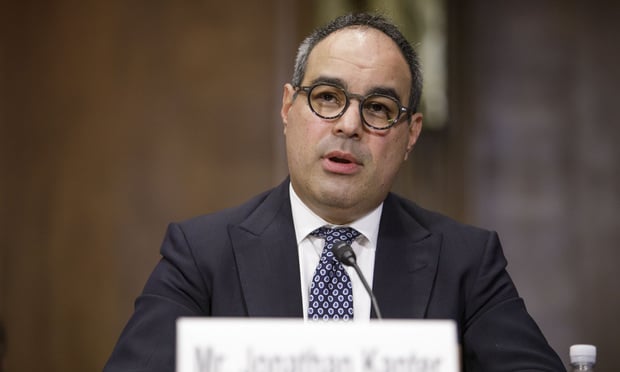Sutter Health intentionally destroyed 192 boxes of documentsthat employers and labor unions were seeking in a lawsuit thataccuses the giant Northern California health system of abusing its market power and charging inflated prices, according to a statejudge.
|In a ruling this week, San Francisco County Superior Court JudgeCurtis E.A. Karnow said Sutter destroyed documents “knowing thatthe evidence was relevant to antitrust issues. … There is no goodexplanation for the specific and unusual destruction here.”
|Karnow cited an internal email by a Sutter employee who said shewas “running and hiding” after ordering the records destroyed in2015. “The most generous interpretation to Sutter is that it wasgrossly reckless,” the judge wrote in his 12-page ruling.
|Sutter, which has 24 hospitals and nearly $12 billion in annualrevenue, said the destruction was a regrettable mistake.
|Employers and policymakers across the country are closelywatching this legal fight amid growing concern about the financialimplications of industry consolidation. Large health systems aregaining market clout and the ability to raise prices by acquiringmore hospitals, outpatient surgery centers and physicianoffices.
|“It’s stunning what Sutter did to cover up incriminatingdocuments in this case,” said Richard Grossman, the leadplaintiffs’ lawyer representing a class of more than 1,500employer-funded health plans.
|In April 2014, a grocery workers’ health plan sued Sutter andalleged it was violating antitrust and unfair competition laws. Theplaintiffs began requesting documents related to contractingpractices, such as “gag clauses” that prevent patients from seeingnegotiated rates and choosing a cheaper provider and“all-or-nothing” terms that require every facility in a healthsystem to be included in insurance networks.
|Sutter disputes the broader allegations in the lawsuit over itsmarket conduct and said its charges are in line with itscompetitors’.
|The judge said that in 2015 Melissa Brendt,Sutter’s chief contracting officer in the managed-care department,and an assistant general counsel, Daniela Almeida, authorizedBrendt’s executive assistant to destroy 10 years’ worth ofmanaged-care documents going back to 1995. The company earlier hadscheduled the documents to be destroyed in 2035 — 20 yearslater.
|The executive assistant, Sina Santagata, testified in adeposition she wasn’t aware of any other time in her 17 years atSutter when the managed-care department destroyed records held instorage.
|In his Nov. 13 ruling against Sutter, the judge singled out an emailby Santagata as “particularly noteworthy.”
||Kaiser HealthNews (KHN) is a national health policy news service. It isan editorially independent program of the Henry J. Kaiser FamilyFoundation.
||
The executive assistant emailed Brendt, the chief contractingofficer, on July 30, 2015, after sending the order to destroy therecords. She wrote, “I’ve pushed the button … if someone is in needof a box between 3/15/95 & 11/23/05 … I’m running and hiding. …‘Fingers crossed’ that I haven’t authorized something the FTC willhunt me down for.”
|The Federal Trade Commission (FTC) enforces antitrust laws inhealth care to prevent hospitals, drugmakers and other industryplayers from engaging in anti-competitive behavior that could harmconsumers.
|Santagata testified that she was being “sarcastic” in her email,and Sutter told the judge that the FTC reference was just a“joke.”
|Karnow saw no humor in it. “There are infinite topics for jokes,and the choice of this one is strong evidence” in the plaintiffs’favor, he wrote in his order Monday.
|As part of his sanctions against Sutter, the judge ordered thehealth system to examine email backup tapes covering 2002 through 2005 to search fordocuments on some of the same topics as the destroyed records.Also, Karnow said he will consider a plaintiffs’ motion for issuingjury instructions that are adverse to Sutter in light of thedocument destruction. The trial is scheduled for June 2019.
|“The record shows that Sutter’s conduct was more than just aninadvertent error,” Karnow wrote.
|Sutter spokeswoman Karen Garner said the incident was a “mistakemade as part of a routine destruction of old paper records” and theSacramento-based health system disclosed the error as soon as itwas discovered.
|“We regret that as part of a routine archiving process we failedto preserve some boxes of decades-old hard-copy documents,” Garnersaid.
|The United Food and Commercial Workers and its Employers BenefitTrust initially filed the case against Sutter in 2014. The jointemployer-union health plan represents more than 60,000 employees,dependents and retirees. The court certified the case as a classaction in August, allowing hundreds of other employers andself-funded health plans to potentially benefit from thelitigation.
|In addition to its 24 hospitals, Sutter’s nonprofit healthsystem has 35 surgery centers and more than 5,000 physicians in itsnetwork. It reported $11.9 billion in revenue last year and incomeof $554 million.
|Grossman, the plaintiffs’ counsel, said he welcomed the judge’sruling. But he said much of the evidence is irreplaceable,particularly handwritten notes from negotiating sessions andmeetings involving key Sutter executives.
|He said those records covered a critical period in the early2000s when there was a “sea change in Sutter’s contractingstrategy” and it implemented provisions that insulated the healthsystem from price competition.
|“This was groundbreaking in the industry,” Grossman said. “Untilwe address the anti-competitive behavior of entities like Sutter,we will not solve the problem of high costs in health care.”
|The plaintiffs are seeking to recover hundreds of millions ofdollars from Sutter from what it claims are illegally inflatedprices. The lawsuit alleges that an overnight hospital stay atSutter hospitals in San Francisco or Sacramento costs at least 38percent more than a comparable stay in the more competitive LosAngeles market.
|A study published last year found that hospital prices at Sutterand Dignity Health, the two biggest hospital chains in California,were 25 percent higher than at other hospitals around the state.Researchers at the University of Southern California said the gianthealth systems used their market power to drive up prices — makingthe average patient admission at both chains nearly $4,000 moreexpensive.
|“Sutter is a pretty extreme case of market power, but healthcare consolidation has become a really important issue across thecountry,” said Kathy Hempstead, a health care researcher at theRobert Wood Johnson Foundation. “It’s been on the back burnersomewhat because of the debate over the Affordable Care Act, butthere is bipartisan interest in tackling this.”
|Kaiser HealthNews (KHN) is a national health policy news service. It is aneditorially independent program of the Henry J. Kaiser FamilyFoundation.
Complete your profile to continue reading and get FREE access to BenefitsPRO, part of your ALM digital membership.
Your access to unlimited BenefitsPRO content isn’t changing.
Once you are an ALM digital member, you’ll receive:
- Critical BenefitsPRO information including cutting edge post-reform success strategies, access to educational webcasts and videos, resources from industry leaders, and informative Newsletters.
- Exclusive discounts on ALM, BenefitsPRO magazine and BenefitsPRO.com events
- Access to other award-winning ALM websites including ThinkAdvisor.com and Law.com
Already have an account? Sign In
© 2024 ALM Global, LLC, All Rights Reserved. Request academic re-use from www.copyright.com. All other uses, submit a request to [email protected]. For more information visit Asset & Logo Licensing.








